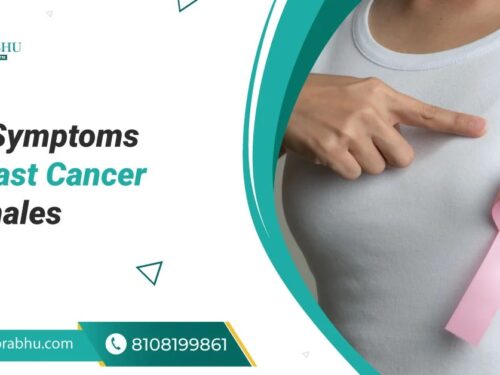
Breast tissue can become cancerous and evolve into breast cancer. Breast cancer develops when the cells there start to divide and grow in an uncontrollable manner, resulting in a tumour or lump. Via the bloodstream or lymphatic system, these aberrant cells can also infiltrate neighbouring tissues or move to other regions of the body.
To increase the likelihood of survival, early detection and treatment of breast cancer are crucial. According to a Cancer Specialist in Navi Mumbai, clinical breast checks, breast MRIs, and other screening procedures can aid in the early detection of breast cancer, when it is most curable.
Depending on the kind and stage of cancer, treatment options for breast cancer may include surgery, radiation therapy, chemotherapy, hormone therapy, or targeted therapy, say the experts in breast cancer treatment in Navi Mumbai.
Also Read: WHAT TO KNOW ABOUT BREAST CANCER?
The following are the 6 types of breast cancer warning signs:
- A bulge or enlargement in the breast or underarm region or close-by alterations in breast size or form
- Nipples that are sensitive or dripping
- Changes in the breast or nipple’s skin tone or texture
- Pain experienced in any breast region
- Breast or nipple swelling or redness
- Palpable Nodule or Lymph Node
Palpable Nodule or Lymph Node
Usually seen in the neck, groyne, or beneath the arms, a palpable nodule or lymph node is a bulge that can be felt or touched on the body. Nodules or lymph nodes that can be felt are frequently the results of an infection, inflammation, or injury, but they can also signal a more serious problem, like cancer.
The lymphatic system, which aids the body in battling illnesses and infections, includes lymph nodes. Little, bean-shaped lymph nodes are filled with immune cells that can assist the body in recognising and combating invading invaders.
The lymph nodes might swell and become palpable when there is an infection or inflammation in the body because they are working to combat the illness. A palpable lymph node, however, may occasionally be an indication of cancer that has progressed from its initial sites, such as breast cancer or melanoma.
It’s crucial to contact your healthcare practitioner for an evaluation to ascertain the cause and, if necessary, proper treatment if you find a palpable nodule or lymph node.
Conclusion:
It’s crucial to remember that not all breast lumps are malignant and that some breast tumours may not even exhibit any symptoms. To find out the cause and, if required, seek treatment, it’s crucial to contact your healthcare physician if you experience any of these warning signs.

